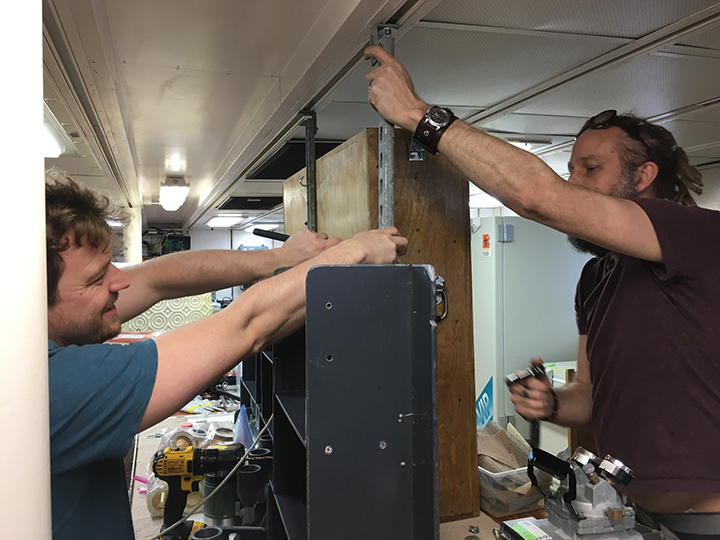In 30 days I’ll be a salty veteran. I’m going out to sea for 3 1/2 weeks with a group of scientists I’ve never met, a fellow lab mate, and a professor from Rutgers. We’re traveling to the North Atlantic to cleverly observe the largest assemblage of phytoplankton on our planet. I’ve heard these research expeditions are grueling – not much sleep every night, waking at impossible hours (11pm), and intense sampling work every day for weeks on end. However, as I become accustomed to the ship and the crew of scientists, engineers, and deckhands as we set up our mobilized laboratory, I can feel the sense of community and warmness, not of stress and hardship. My lab mate hugs every scientist he knows as he sees them for the first time since the last expedition, and I meet scientists from around the USA. Exuberant scientists from different labs are explaining how their instruments work to others, just for the sake of learning.
Each scientists knows their duty – to propel their minds past the limits of what they know about their surroundings, and report back. However, even amongst the high level of expertise and knowledge of professors and NASA employees, I don’t feel a sense of competition.

View of the R/V Atlantis from the San Juan, Puerto Rico dock
Today, docked in San Juan, we prepare for deployment, and diverse groups of scientists bond over beer after work. Some set up planes which fly by our ship when it will venture into the Atlantic, and collect cloud samples. Some are constructing scaffolds which collect the mist pushing off of the sea surface. Our lab collects samples of seawater at various depths. Each lab has sent out experts in their field, taking as many samples as they can.

Ben Diaz (left) and Kay Bidle (right) making the dream work
When it’s over, it’s up to each lab group to coordinate with other scientists and piece together a picture of what’s happening. Can phytoplankton influence cloud formation? Is it possible that this mass of phytoplankton contributes to what we call seasons? How do different particles or plastics found in seawater influence the interaction between phytoplankton and the atmosphere? We don’t know how the pieces will come together just yet, but we all love the process.
Written by Ben Diaz




Such interesting work, and with such great cooperation and integration….pls keep sending the updates and pics. Hope you can avoid these persistent nor’easters we’re getting here on the east coast (wonder what overall effects these have).
Interesting. I would love to know the results.